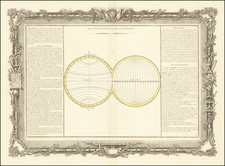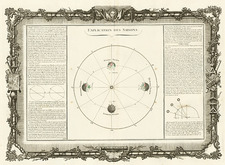Original Artwork for Lionel Morris's Antique Cars
Finely executed watercolor illustration of a 1912 Panhard & Levassor, which was used for Lionel Harris's Antique Cars: The Story of the Automobile in Pictures, first published in about 1968.
The 1912 Panhard & Levassor stands as a testament to the pioneering spirit and engineering prowess of the early 20th century automotive industry. Founded in 1887, Panhard & Levassor was a French manufacturer that played a crucial role in shaping the direction of automobile design and technology. By 1912, the company had firmly established itself as a leader in the industry, known for its innovative approaches and high-quality vehicles.
The 1912 Panhard & Levassor was equipped with a powerful four-cylinder engine, capable of delivering substantial horsepower for its time. This model featured advanced engineering techniques, including a sliding gear transmission system, which was a significant improvement over previous designs and became a standard in the industry. The vehicle's chassis was robust, designed to handle the rough roads of the era, while its elegant bodywork showcased the sophisticated design aesthetics of early automotive craftsmanship. The combination of performance and elegance made the 1912 Panhard & Levassor a standout model in the burgeoning automotive market.
The introduction of the 1912 Panhard & Levassor marked a pivotal moment in automotive history. It demonstrated the potential of combining advanced engineering with refined design, setting a benchmark for future automobiles. Panhard & Levassor's contributions to the automotive industry went beyond mere production; they influenced the overall direction of vehicle design and manufacturing. This model, in particular, highlighted the importance of innovation in achieving both reliability and aesthetic appeal, principles that continue to drive the automotive industry today.
Today, the 1912 Panhard & Levassor is highly regarded among collectors and automotive historians. It represents an era of significant technological advancements and the early adoption of features that would become standard in later vehicles. Its rarity and historical importance make it a coveted piece in any collection, reflecting the early 20th-century pursuit of excellence in automotive engineering and design.









![F.C. de Samana y Santiago. Sanchez [Santa Domingo]](https://storage.googleapis.com/raremaps/img/small/87648.jpg)

![[Board Game Featuring Very Early Aircraft]](https://storage.googleapis.com/raremaps/img/small/78144.jpg)


![(Prussian Octopus) En 1788 Mirabeau disait deja: La Guerre est l’industrie Nationale de la Prusse [Already in 1788 Mirabeau was saying: War is the national industry of Prussia]](https://storage.googleapis.com/raremaps/img/small/76554.jpg)